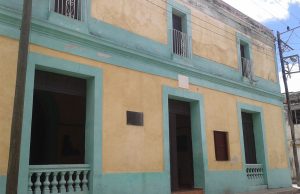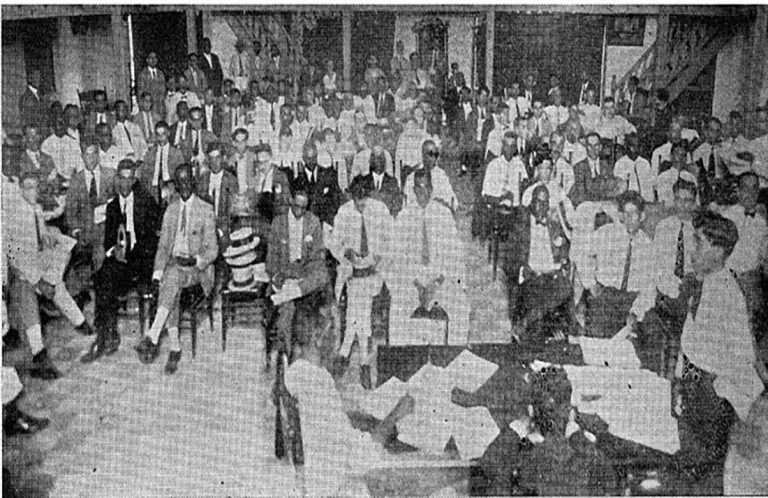The Cuban labor movement to date had made important progress, in addition to the fact that within it the tendencies were diverse: anarchists, reformists, socialists of different nuaces, alike were fighting for economic demands.
Since then, the union forms were overcome by a systemic and complex associationism. Thus, in 1914 a Labor Congress nationwide had already been held. However, it is in 1920 where the renowned First National Workers Congress takes place. Its scope is evaluated – independently of the predominant anarchist ideas – by the pronouncement of the need for a trade union center that brings everyone together.
As a consequence of the organizational ideas already expressed, the Workers’ Federation of Havana was founded in 1921. The results would be palpable in the II National Workers Congress in Cienfuegos (1925) and in the III Congress in Camagüey, in the same year.
National Workers’ Confederation of Cuba
 The founding of the National Workers’ Confederation of Cuba (CNOC) demonstrated, from the organizational perspective, a momentous step by distinguishing new organizational forms of common struggles and demands.
The founding of the National Workers’ Confederation of Cuba (CNOC) demonstrated, from the organizational perspective, a momentous step by distinguishing new organizational forms of common struggles and demands.
The CNOC brought together anarcho-syndicalists, socialists, communists and reformists. A few days after its foundation, the First Communist Party was constituted, which from then on would count on the support of that union center for its political activities.
The presence of Alfredo López, who became the soul of the Congress, made possible the approval of important agreements in the interest of the workers, and that the unitary spirit that accompanied the CNOC during all its struggles prevailed until 1939, when it dissolved to make way to the creation of the Confederation of Cuban Workers.
Leadership
Alfredo López, labor leader, was the main promoter of this event, representing thousands of workers. On February 17th, 1925, the motion to create a National Workers ‘Confederation was approved, which had to be specified in the Third Workers’ Congress. He was a fundamental figure in the advances of the labor movement of these years.
In the act of constitution of the CNOC, a telegram from Julio Antonio Mella was read, which gave news of the government ban on the landing on Cuban land of the crew of the Soviet ship Vatslav Vorovski, anchored in Cárdenas Bay to collect a shipment of sugar.
The young intellectual Rubén Martínez Villena drew up a program of demands for the CNOC, which embodied the aspirations and needs of all labor sectors, affiliated with the union or not. Rubén Martínez Villena, adviser to the Confederation, became, in fact, the top leader of that organization, which created, in conjunction with the Communist Party, the “pro-unity” groups, also known as revolutionary trade union oppositions, such as the Pro Line Group of the CNOC, of the Trade Employees Union.
Transcendence
 The Camagüey Workers’ Congress is in favor of the celebration of a continental event, as a previous step to the creation of a federation of American workers. An unsuccessful initiative, however, the trade union forum is a demonstration of the rise experienced by the revolutionary struggle in the second decade of the twentieth century.
The Camagüey Workers’ Congress is in favor of the celebration of a continental event, as a previous step to the creation of a federation of American workers. An unsuccessful initiative, however, the trade union forum is a demonstration of the rise experienced by the revolutionary struggle in the second decade of the twentieth century.
The CNOC was dissolved in the congress of constitution of the Confederation of Cuban Workers (CTC, by its acronym in Spanish), held between January 23rd and 28th, 1939, which in 1961 became the Confederation of Cuban Workers, current organization that It brings together all the unions in the country, and that today more than ever it corresponds to play an active role in monitoring the rights of workers, but also the interests of society.
Bibliography
López Civeira, F. (2009) Cuba entre 1899 y 1959. Seis décadas de historia. Editorial Félix Varela, La Habana, Cuba.
Translated by: Aileen Álvarez García






